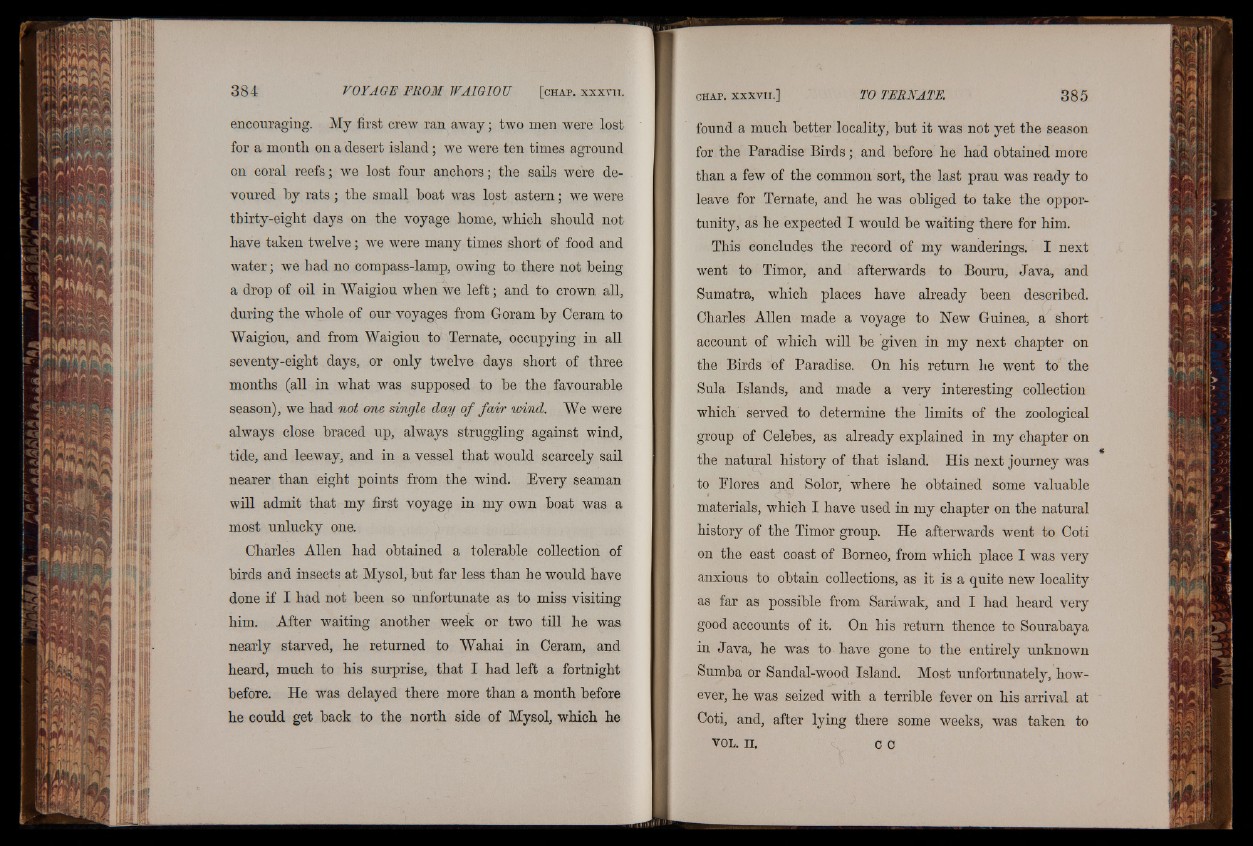
encouraging. My first crew ran away; two men were lost
for a month on a desert island; we were ten times aground
on coral reefs; we lost four anchors; the sails were devoured
by ra ts; the small boat was lost astern; we were
thirty-eight days on the voyage home, which should not
have taken twelve; we were many times short of food and
water; we had no compass-lamp, owing to there not being
a drop of oil in AVaigiou when we left; and to crown all,
during the whole of our voyages from Goram by Ceram to
Waigiou, and from Waigiou to Ternate, occupying in all
seventy-eight days, or only twelve days short of three
months (all in what was supposed to be the favourable
season), we had not one single day of fa ir wind. We were
always close braced up, always struggling against wind,
tide, and leeway, and in a vessel that would scarcely sail
nearer than eight points from the wind. Every seaman
will admit that my first voyage in my own boat was a
most unlucky one.
Charles Allen had obtained a tolerable collection of
birds and insects at My sol, but far less than he would have
done if I had not been so unfortunate as to miss visiting
him. After waiting another week or two till he was
nearly starved, he returned to Wahai in Ceram, and
heard, much to his surprise, that I had left a fortnight
before. He was delayed there more than a month before
he could get back to the north side of Mysol, which he
found a much better locality, but it was not yet the season
for the Paradise Birds; and before he had obtained more
than a few of the common sort, the last prau was ready to
leave for Ternate, and he was obliged to take the opportunity,
as he expected I would be waiting there for him.
This concludes the record of my wanderings. I next
went to Timor, and afterwards to Bouru, Java, and
Sumatra, which places have already been described.
Charles Allen made a voyage to Hew Guinea, a short
account of which will be given in my next chapter on
the Birds of Paradise. On his return he went to the
Sula Islands, and made a very interesting collection
which served to determine the limits of the zoological
group of Celebes, as already explained in my chapter on
the natural history of that island. His next journey was
to Flores and Solor, where he obtained some valuable
materials, which I have used in my chapter on the natural
history of the Timor group. He afterwards went to Coti
on the east coast of Borneo, from which place I was very
anxious to obtain collections, as it is a quite new locality
as far as possible from Sarawak, and I had heard very
good accounts of it. On his return thence to Sourabaya
in Java, he was to have gone to the entirely unknown
Sumba or Sandal-wood Island. Most unfortunately, however,
he was seized with a terrible fever on his arrival at
Coti, and, after lying there some weeks, was taken to
VOL. II. c c